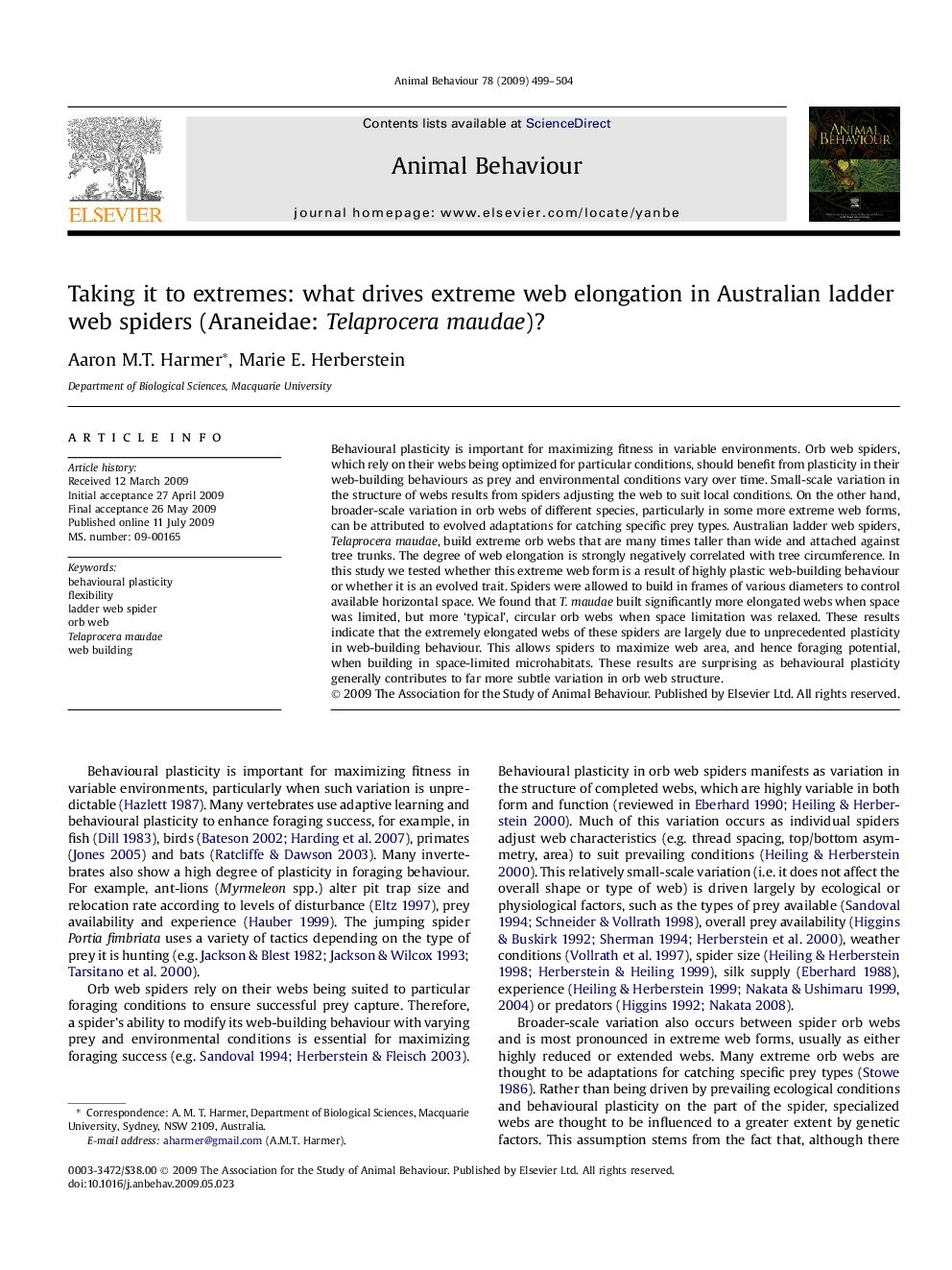| Article ID | Journal | Published Year | Pages | File Type |
|---|---|---|---|---|
| 2417453 | Animal Behaviour | 2009 | 6 Pages |
Abstract
Behavioural plasticity is important for maximizing fitness in variable environments. Orb web spiders, which rely on their webs being optimized for particular conditions, should benefit from plasticity in their web-building behaviours as prey and environmental conditions vary over time. Small-scale variation in the structure of webs results from spiders adjusting the web to suit local conditions. On the other hand, broader-scale variation in orb webs of different species, particularly in some more extreme web forms, can be attributed to evolved adaptations for catching specific prey types. Australian ladder web spiders, Telaprocera maudae, build extreme orb webs that are many times taller than wide and attached against tree trunks. The degree of web elongation is strongly negatively correlated with tree circumference. In this study we tested whether this extreme web form is a result of highly plastic web-building behaviour or whether it is an evolved trait. Spiders were allowed to build in frames of various diameters to control available horizontal space. We found that T. maudae built significantly more elongated webs when space was limited, but more 'typical', circular orb webs when space limitation was relaxed. These results indicate that the extremely elongated webs of these spiders are largely due to unprecedented plasticity in web-building behaviour. This allows spiders to maximize web area, and hence foraging potential, when building in space-limited microhabitats. These results are surprising as behavioural plasticity generally contributes to far more subtle variation in orb web structure.
Related Topics
Life Sciences
Agricultural and Biological Sciences
Animal Science and Zoology
Authors
Aaron M.T. Harmer, Marie E. Herberstein,
